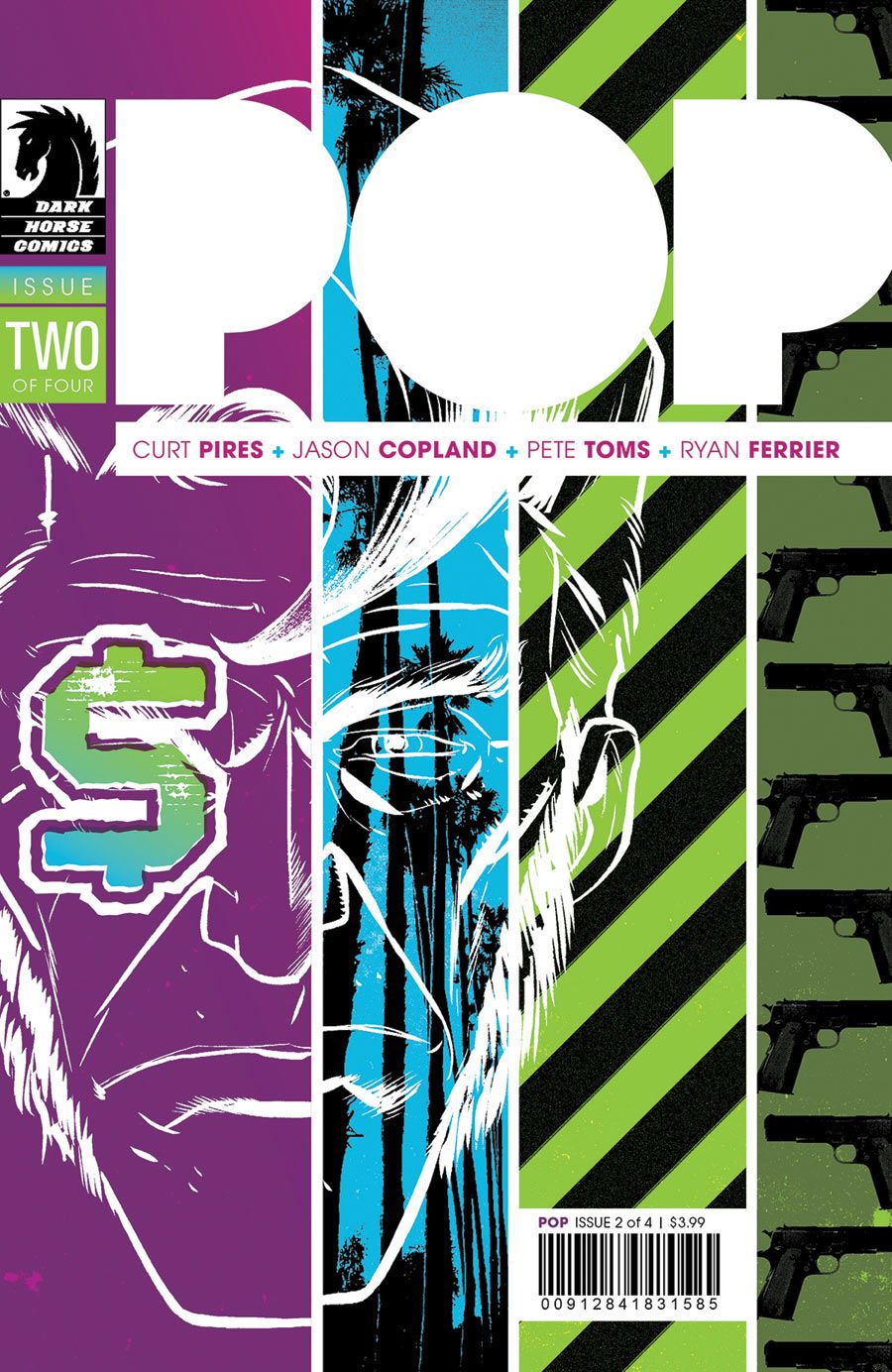Pop stars aren't born, they're made, and that's a literal truth in Curt Pires and Jason Copland's mini-series "POP." In issue #2, one of them remains on the run after her escape last issue from the manufacturing facility where she was grown, but her disappearance naturally doesn't go unnoticed. The various bad guys chasing after future star Elle comprise an array of some pretty sinister characters, and it's this characterization that gives the issue its flavor as it navigates through Pires' relatively straightforward plot.
Ironically, Elle herself doesn't have much personality, but then, her premature "birth" only brought her into the world a couple of days ago. Her rescuer Coop demonstrates his heroic side now that he's found purpose in his previously unhappy life, and the creepy and emotionless pair of leg-breakers who are pursuing Elle are genuinely threatening. As rendered by Copland, Spike Vandall, in addition to having the coolest name in the cast, evokes Peter Cushing in an Armani suit as the head of his very own pop star factory, while the bossy and bloated record label exec could have been Jabba the Hutt in another life. All of Pires and Copland's villains are larger than life, making the once down-and-out and seemingly ordinary Coop seem all the more extraordinary.
Coop wanted to kiss the world good-bye last issue, and with human beings grown in laboratories under the command of corporate executives, the world of "POP" doesn't seem to be a very happy one, and Copland illustrates it accordingly. His style is very course and worn-looking; the characters all look like they've endured a lot, even Elle; and the lab where she was gestated is a colorless, cramped, and generally unpleasant place. Things don't really seem much less restrictive even outdoors, that is until Elle takes a drug-induced psychedelic trip to try and discover her origins. Both Copland and Pires stretch their minds during this sequence, and both manage to bring readers along on a trippy although largely indecipherable journey, except for its conclusion which reveals part of the reason how Elle came to be free. As with most any mind trip sequence in comics, color really does matter, and colorist Pete Toms plays his part well in this one, although the tones used don't really stand out from those applied in the rest of the comic.
Readers might want to have their Google app fired up while reading this comic, so they can look up some of the obscure names and references made throughout by Pires. This doesn't impede the experience, though, as the references aren't critical to understanding the story, but they do give it an avant-garde kind of style. There's nothing manufactured about "POP" #2; its compelling premise, colorful characters and trendy vibe make it worthwhile.

